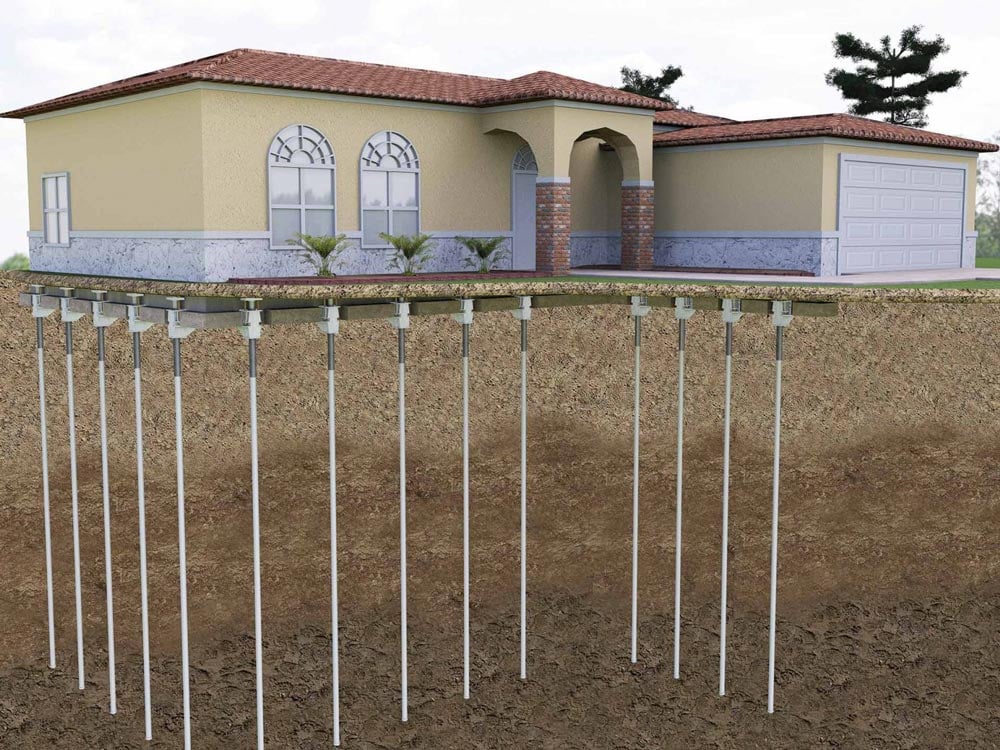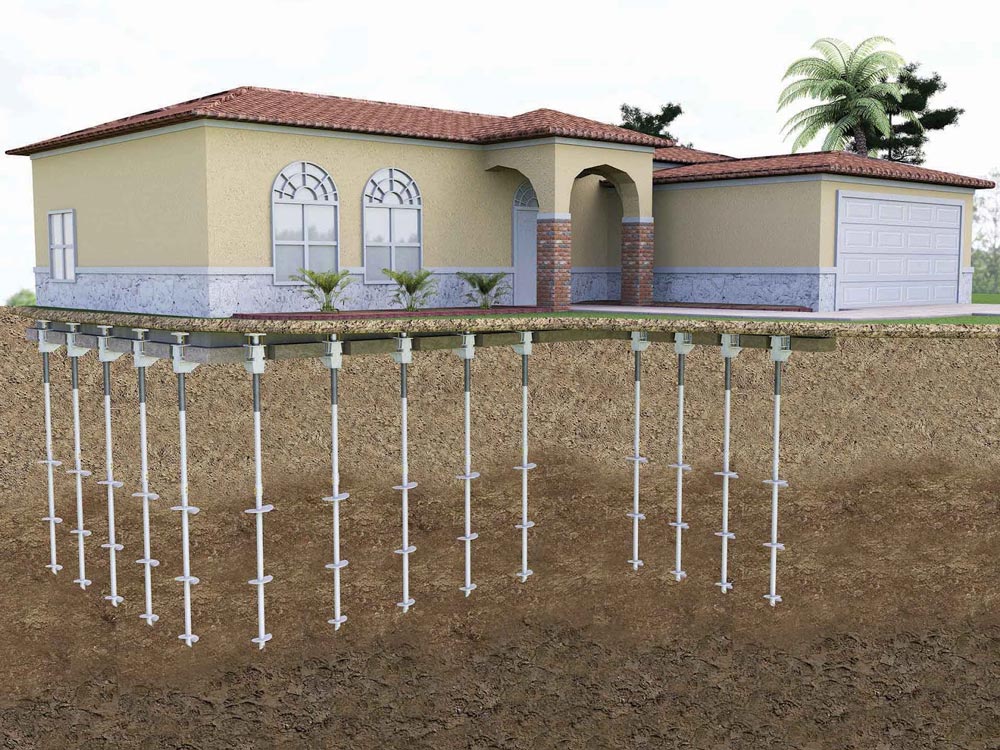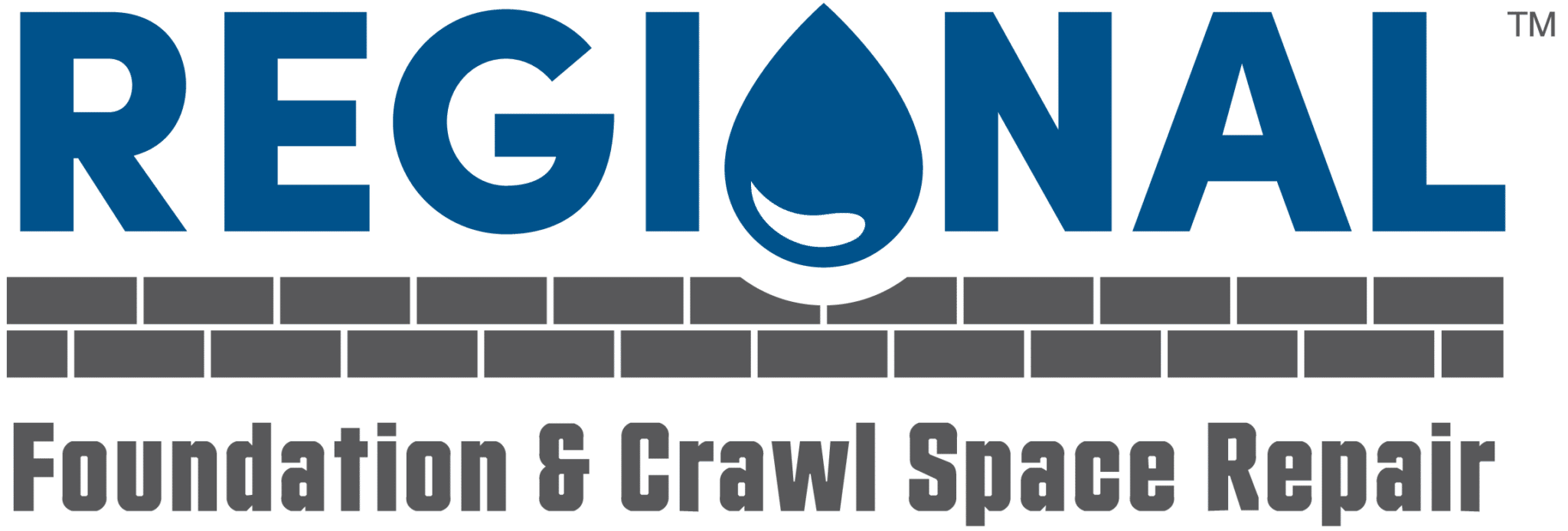Push Piers Vs. Helical Piers – Pros, Cons, and More
Push piers and helical piers are two of the most popular and effective options for leveling and providing greater stability for your foundation. Despite that, however, many homeowners remain unaware of the differences between these two foundation support choices.
If you’re dealing with a sinking foundation and want to learn more about how push piers and helical piers can help you, then you’re in the right place. In the sections below, we’ll detail the primary function of push and helical piers and lay out the pros and cons of each one. By the time you’re done reading, you’ll have a clearer idea of whether push or helical piers are right for you.
What Are Push Piers and Helical Piers Used For?
Part of the reason why so few people know the difference between push and helical piers is that they don’t know what these piers are used for in the first place. Helical and push piers serve the same purpose of leveling and stabilizing a settling foundation.
But while these piers achieve the same goal, they do so by different means. Learning the differences between push and helical pier functionality is the first step towards learning which one is preferable for your home.
How Push Piers Work
The installation of push piers involves pushing hollow pier segments into the ground until they reach bedrock or a layer of soil that is strong enough to hold them in place. Typically, this process requires the use of hydraulics to press each pier segment down into the earth. The hollow nature of the piers makes it easier for each segment to move through the soil.
Once a set of push piers has reached an appropriate depth, the installation team will attach them to the foundation, which adds an immense amount of stability. At this stage, the team may also jack up the house to level it as necessary.

How Helical Piers Work
The process of installing helical piers is a bit different from the process of push piers. Rather than consisting of a series of pier segments, helical piers act like screws or augers to bore their way down into the earth.
Many helical piers include a pressure gauge that indicates when the piers reach a sufficient depth. Similar to push piers, once a set of helical piers is properly in the ground, the installation team will attach them to the foundation to add stability to the entire structure.

Pros and Cons of Push Piers
Now that you know the basics of how push piers and helical piers work, it’s time to discuss the main pros and cons of these foundation stabilization options. Let’s begin with the main pros and cons of push piers.
Push Pier Pros
Push piers are a time-tested method for adding stability to a house or building. One of the greatest advantages of push piers is that they work well even if you live in an area with shallow bedrock.
Since push piers must go deep enough to touch solid strata, shallow bedrock is advantageous when using these piers. By contrast, when using helical piers in a shallow bedrock area, the piers may not have enough space to build the torsion necessary to properly stabilize a building.
Similarly, push piers often require a smaller work area as well. Because these piers are inserted vertically into the ground right next to your foundation, it is possible to install them even if your house is close to other buildings or structures.
Lastly, push piers often prove to be slightly less expensive than helical piers. While this difference can be minimal at times, it makes push piers the better choice for those on a budget.
Push Pier Cons
While there are plenty of advantages to push piers, they are not without their drawbacks. First, push piers tend to be less versatile than helical piers. The reason is that helical piers can be installed at an angle or straight up and down. Push piers also tend to be less compatible with different soil types compared to helical piers.
Additionally, push piers often have lower tension values than helical piers, meaning they offer slightly less stability overall. The installation process for push piers can also be a bit longer, which makes them a bit less convenient.
Pros and Cons of Helical Piers
With the pros and cons of push piers out of the way, it’s time to discuss the details of helical piers. Read on to learn the advantages and disadvantages of this type of foundation stabilization.
Helical Pier Pros
The greatest advantage of helical piers is that these piers are both incredibly strong and versatile. While push piers must be installed vertically, helical piers can be installed vertically or at an angle. This adds stability to your home along both vertical and horizontal directions.
Overall, helical piers tend to have more strength than push piers. So, if strength is your number one goal, helical piers may be the best option for you. Along with being strong, helical piers are also suitable for a wide range of soil types.
Lastly, the installation process for helical piers tends to be much quicker than that of push piers. This means that by choosing helical piers over push piers, you’ll have greater stability for your home in a shorter amount of time.
Helical Pier Cons
Clearly, helical piers have many advantages that make them an excellent choice–but they have their faults as well. The most prevalent of cons against helical piers is that they are more expensive to install than helical piers.
As we hinted earlier, helical piers may not be the best option for areas that have shallow bedrock. Since helical piers build more torsion the further into the ground they go, shallow bedrock may prevent the piers from reaching a depth that allows for adequate tension and foundation stabilization.
Helical Piers Vs. Push Piers – Which Is Right for You?
Deciding between helical piers and push piers is all about understanding how each one works and the unique pros and cons that each option offers. While both push piers and helical piers perform the same role, push piers tend to be a bit more cost-effective and better for areas with shallow bedrock. Meanwhile, helical piers are often stronger and more adaptable to different soil types.
Still, while this article provides an introduction to push piers and helical piers, there is plenty more to learn. The best method for finding the right piers for you is to seek the help of a professional.
At Regional Foundation & Crawl Space Repair, we are the leading experts in the Eastern North Carolina region on foundation-related issues. If you want to learn more about push piers and helical piers, or any of our other foundation repair services, reach out to us today!

